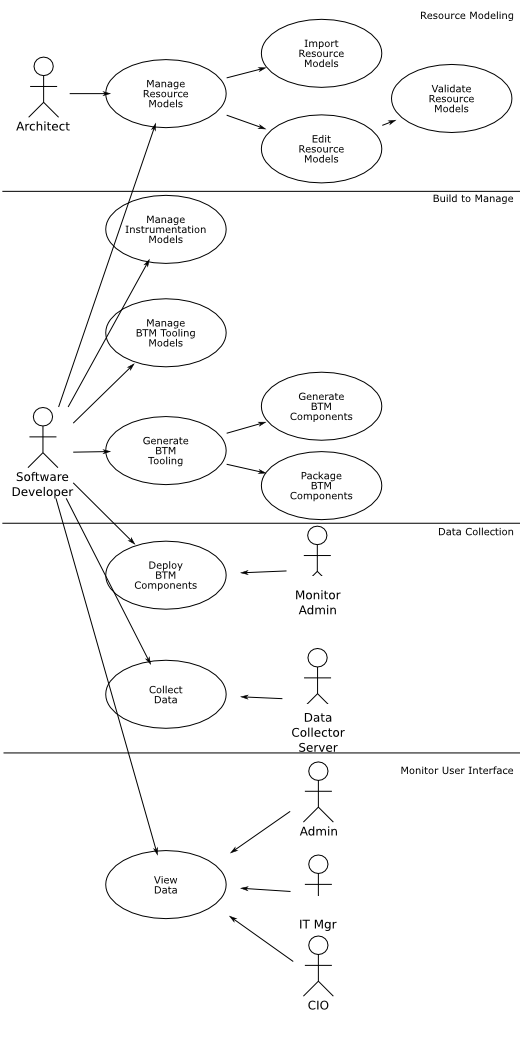Notice: this Wiki will be going read only early in 2024 and edits will no longer be possible. Please see: https://gitlab.eclipse.org/eclipsefdn/helpdesk/-/wikis/Wiki-shutdown-plan for the plan.
Difference between revisions of "End-to-End use cases"
| Line 3: | Line 3: | ||
Work on fleshing out these use cases continues, in the context of workgroups. | Work on fleshing out these use cases continues, in the context of workgroups. | ||
* The first meeting was October 31, 2006 2-3pm EST. See the [[E2EMeetingMinutes31Oct06|minutes]] for more information. | * The first meeting was October 31, 2006 2-3pm EST. See the [[E2EMeetingMinutes31Oct06|minutes]] for more information. | ||
| − | * Another meeting was held on this subject on December 4, 2006, 1:30-5pm PST. See the [[]]. | + | * Another meeting was held on this subject on December 4, 2006, 1:30-5pm PST. See the [[COSMOSF2F04Dec06|minutes]]. |
__TOC__ | __TOC__ | ||
Revision as of 02:06, 5 December 2006
This article presents the "end-to-end" use cases for Eclipse COSMOS. This work is an attempt to collect all of the key use cases under one roof, primarily for purposes of identifying scope and release phases. This high-level view of use cases also supports analysis of the opportunities for extensions built on the Eclipse COSMOS framework by commercial and open source communities.
Work on fleshing out these use cases continues, in the context of workgroups.
- The first meeting was October 31, 2006 2-3pm EST. See the minutes for more information.
- Another meeting was held on this subject on December 4, 2006, 1:30-5pm PST. See the minutes.
Contents
The diagram sketches out the end-to-end use cases. Time progresses vertically, down the diagram.
Resource Modeling Use Cases
In these use cases, the Software Architect manages Resource Models. A Resource Model could be created from scratch using a model editing framework. Or, a Resource Model could be imported, either from a local model repository, from a supplier's repository (a set of Resource Models from a hardware manufacturer, or a software vendor), or perhaps it could be provided from a discovery monitor (hey, I found one of these resources at ip address 172.28.111.123).
Build to Manage Use Cases
Here, the Software Developer creates an Instrumentation Model for a Resource Model. This is either a related SML model or an extension or decoration of the Resource Model itself. The Instrumentation Model describes the measurements that are available, relevent, or required for the elements of the Resource Model.
Next the Software Developer manages the Build to Manage Tooling Model for an Instrumented Resource Model. This, again, is either a related SML model or an extension or decoration of the Resource Model. The BTM Tooling Model describes how the Instrumented Resource Model's requirements will be fulfilled with generated tooling componentry.
Finally, the Software Developer generates the BTM components and packages them for deployment.
Data Collection Use Cases
In these use cases the BTM Tooling is installed in the managed environment, and data collection is performed.
Monitor User Interface Use Cases
In these use cases, the collected data is retrieved for use in visualization.

